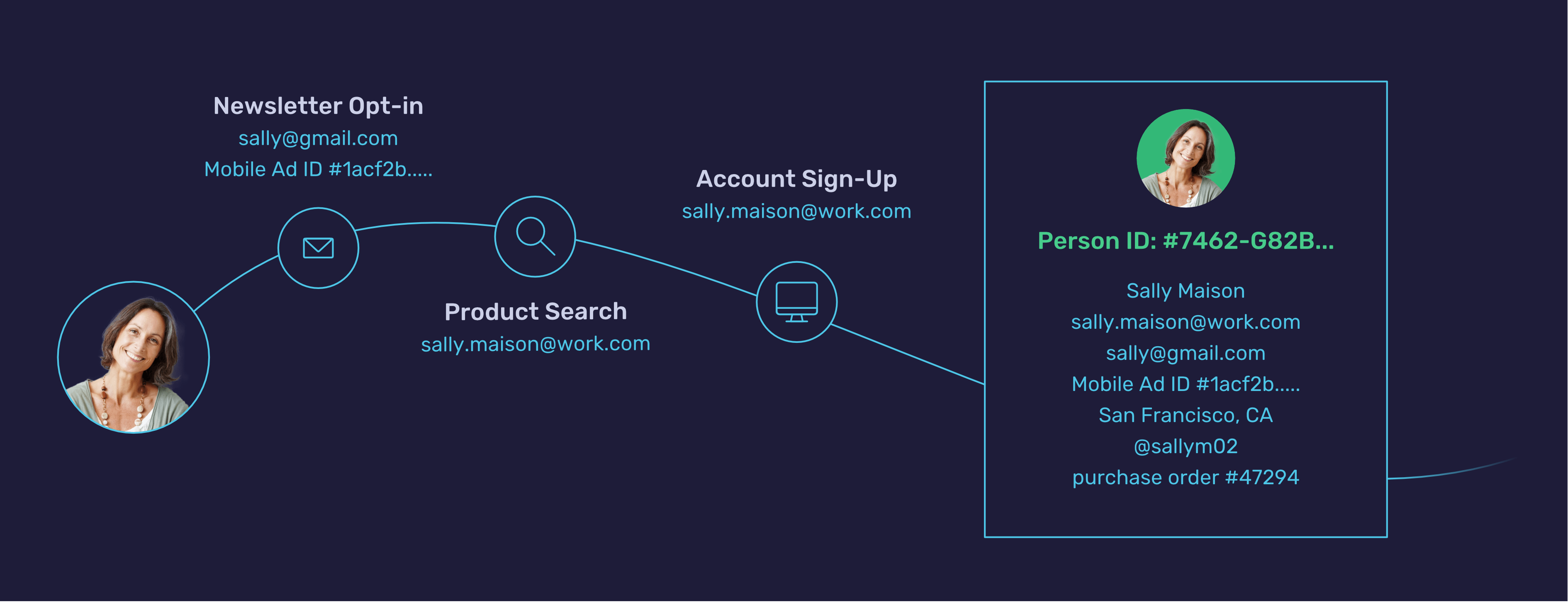
Marketing Automation: How Identity Resolution Drives Analytics
This is the third post in a series exploring why your marketing automation platform needs Identity Resolution. Read the first post discussing implementing Identity Resolution into your marketing automation platform from a high level, and the second post which deep dives into why your email marketing needs Identity Resolution.
Common Marketing Automation Mistakes
A CMO always has to be prepared–daily, weekly, monthly, quarterly–to answer questions around their marketing campaigns. They’re asked about traffic, conversions, campaign engagement, audience understanding, and so much more. They have to be able to understand the performance of their campaigns and be able to make real-time decisions to continue to improve their results and drive higher ROI.
So how does a CMO stay informed? How do they know what’s working (and what isn’t) for their audience? If the right analytics and reporting tools are available, their marketing automation platform should be able to inform decisions based on real-time data to make the biggest impact on their business.
There are two major mistakes a marketing automation platform can make. The first is if they provide their customers with inaccurate insights into their contacts and marketing campaigns, for example, confusing customers for prospects. The second and less obvious error they can make is to provide too many insights to their customers. If there’s an overwhelming amount of insights given, marketers can struggle to identify the valuable data that will actually drive higher campaign results. Marketing automation platforms shouldn’t focus on providing their customers with as much information as possible, but to provide your customers with the right information. And they should do so in as close to real-time as possible so that marketers can make the best decisions for their campaigns.
Identity Resolution and Reporting
When it comes to providing marketers with information, you have to go beyond the basics–who purchased after opening your email, how much have they spent, how often they spend, etc– these are table stakes. That’s the minimum your customers expect from you. But you need to differentiate yourself from the competition and reach beyond the basics that every automation platform can support.
You need to empower your customers to cut through the noise and help them focus on marketing messaging that reaches and recognizes people with personalized, relevant content they want. And you need to do it in real-time. So how do you give your customers in-depth, accurate information to drive higher results? Identity Resolution.
Identity Resolution takes disparate identifiers and touchpoints your customers have on multiple platforms, devices, and channels and maps them to a single person. This allows you to see the whole person and engage in a hyper-personalized fashion no matter where, when, or how they engage with you.
Keep Your Measurement Persistent
To properly measure your campaigns and engagements, you need a common identity layer on sales and transaction data. This enables linking media and sales channels directly, leading to better optimization and more efficient marketing. You need something transparent and incremental, a tool that will let you have full control of measurement based on your actual needs.
The only way to truly bring all of your information together is to have a secure, anonymous, portable, omnichannel, and persistent ID as a source of truth. A persistent ID is attached to multiple pieces of the core identity, so if one of those identifiers changes (if someone moves or changes their phone number), the ID remains attached to the other parts of that identity, and persistency is maintained.
Using persistent IDs that can be used across channels, Identity Resolution makes analytics solutions much more robust. They allow CMOs to know exactly what content was relevant, on what channels people interacted with that content, and what was the engagement that made them convert. It will reveal if there are any trends in this pattern that could be identified and altered to shorten the cycle, or if a piece of content seems to be driving little value in the sales process and can be removed. A persistent ID guarantees that you’re reporting the right audience information back to your customers.
Let’s dive into an example–say Sally visits your customer’s website and signs up for their newsletter on her phone. While at work, she sees something in the newsletter that catches her eye and she wants to know more about it. Maybe she decides to search on her work computer instead of clicking through the newsletter on her phone. When purchasing, Sally ends up signing up for an account on her work computer, with a different email address than the one she had previously used to sign up for the newsletter. Having a single persistent ID for Sally, means that she doesn’t become two individuals within your reporting. You know that Sally who signed up for the newsletter using sally@gmail.com is the same Sally who signed up for an account using sally.maison@work.com. And with that knowledge, you can pull all of her interactions with your customer into one clean profile so that your customer knows what truly converts and what Sally’s full journey looked like.

Empower Your Customers
With Identity Resolution baked into your analytics and reporting, you are enabling your customers to understand:
- Website traffic
- Audience performance and behavior
- The complete picture of your audience to drive more personalized, engaging content
- Campaign performance by audience and content
- Engagement performance for leads versus account
Empower your customers to dig deeper into their audience and campaign performance by making your data digestible in a way that is quickly and easily actionable.
We’ll be back in a few weeks to cover Marketing Automation and Lead Management!
Recent Blogs
-
 August 28, 2024 The Sales Rep's Guide to Maximizing Productivity with Website Visitor Data Acumen, Media Personalization, Marketing & Sales
August 28, 2024 The Sales Rep's Guide to Maximizing Productivity with Website Visitor Data Acumen, Media Personalization, Marketing & Sales -
 August 6, 2024 Turn Visitors into Leads: How to Install the Acumen Web Tag in 5 Easy Steps Acumen, Website Recognition
August 6, 2024 Turn Visitors into Leads: How to Install the Acumen Web Tag in 5 Easy Steps Acumen, Website Recognition -
 September 21, 2023 Discover How FullContact is Building Trusted Customer Relationships through Snowflake's Native Application Framework Customer 360, Website Recognition, Identity Resolution
September 21, 2023 Discover How FullContact is Building Trusted Customer Relationships through Snowflake's Native Application Framework Customer 360, Website Recognition, Identity Resolution